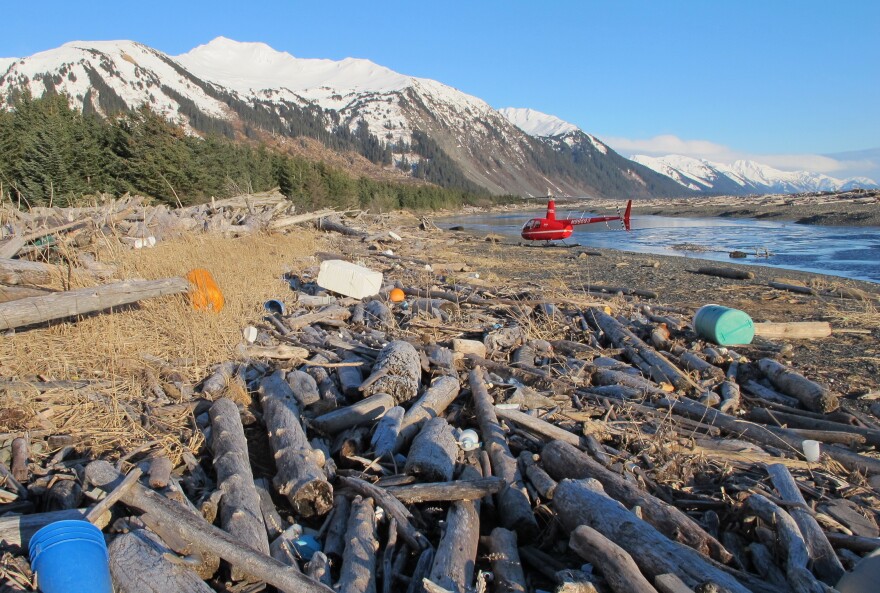Refrigerators, foam buoys and even ketchup bottles are piling up on Alaska's beaches. Almost two years after the devastating Japanese tsunami, its debris and rubbish are fouling the coastlines of many states — especially in Alaska.
At the state's Montague Island beach, the nearly 80 miles of rugged wilderness looks pristine from a helicopter a few thousand feet up. But when you descend, globs of foam come into view.
Chris Pallister, president of the nonprofit Gulf of Alaska Keeper, has been cleaning up debris that washes onto Alaska's shores for the past 11 years. Marine debris isn't a new issue for the state, but he says his job got a whole lot harder when the tsunami wreckage began arriving last spring.
"You're basically standing in landfill out here," he says, shaking his head in disgust.
He points to an area scattered with foam bits smaller than packing peanuts.
"This is what we're worried about. This Styrofoam is just going to get all ground up, and you can see there would just be billions and trillions of little bits of Styrofoam scattered all over everything," Pallister says.
Environmental Concerns
The trash isn't just an eyesore. Pallister says birds, rodents and even bears are eating the pieces of foam. Chemicals are also a worry. Among the debris, Pallister finds containers that held kerosene, gas and other petroleum products.

Sifting through the mess, he picks up a small blue bottle and unscrews the cap.
"I have no idea what this was. It looks like dish soap maybe," Pallister says. "But there's thousands of bottles like this up and down the coast, from small household chemical items to big industrial-size drums."
Last summer, the state paid for an aerial survey to inspect 2,500 miles of Alaska's coastline. Elaine Busse Floyd, who's with the state's Department of Environmental Conservation, says there was tsunami debris on every beach photographed.
"They took over 8,000 pictures, and it was more widespread and in greater quantities than we even expected," Floyd says.
But, officially, the National Oceanic and Atmospheric Administration recorded just five tsunami debris items in Alaska. The agency will only confirm an object if it has a unique identifier that can be traced back to Japan.
Limited Financial Support
Environmental activists and people like Pallister still maintain that the trash isn't being taken seriously enough.
So far, there has been little money for cleanup. Alaska's congressional delegation is working to get federal funds, but tsunami debris cleanup money was recently stripped from a bill for Hurricane Sandy relief.
Pallister admits that the tsunami debris doesn't have the visceral impact of the Exxon Valdez spill. There are no oiled otters or blackened coastlines. But the debris, he says, could be a big environmental disaster in the long run.
"In a lot of ways, it's a lot worse than the oil spill," Pallister says, "both in the geographic scope of it and the chemicals that are coming with it. And who knows what the impacts are going to be?"
If funding does comes through soon, Pallister hopes to be back on the beach this summer, slinging loads of debris and rubbish onto a barge and off the wild coastline.
Copyright 2023 Alaska Public Media. To see more, visit Alaska Public Media.

